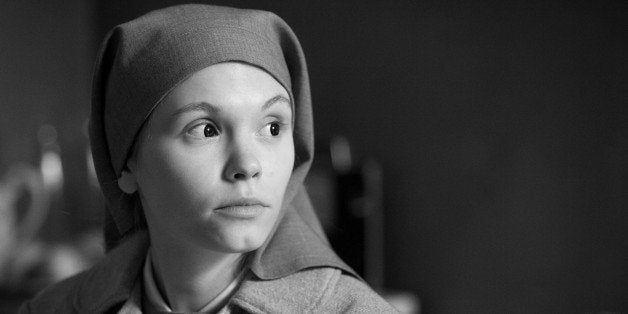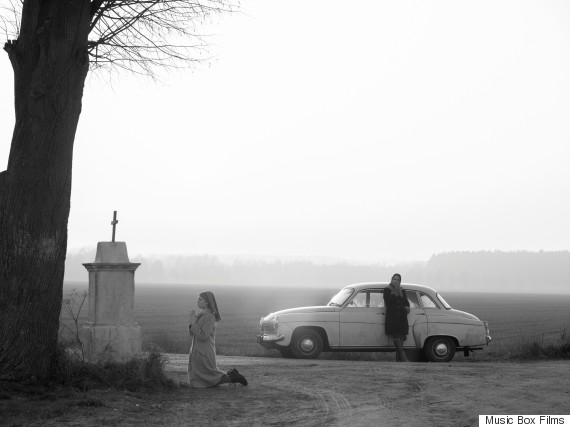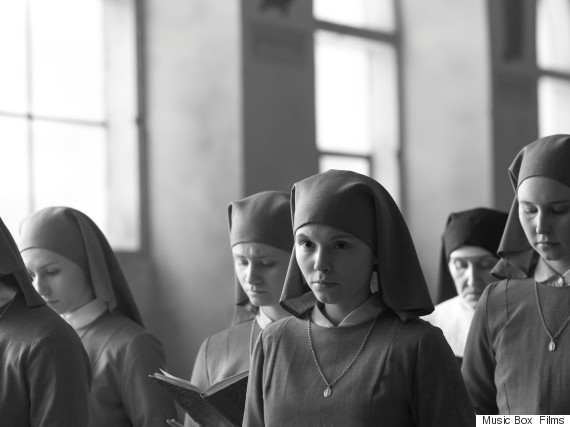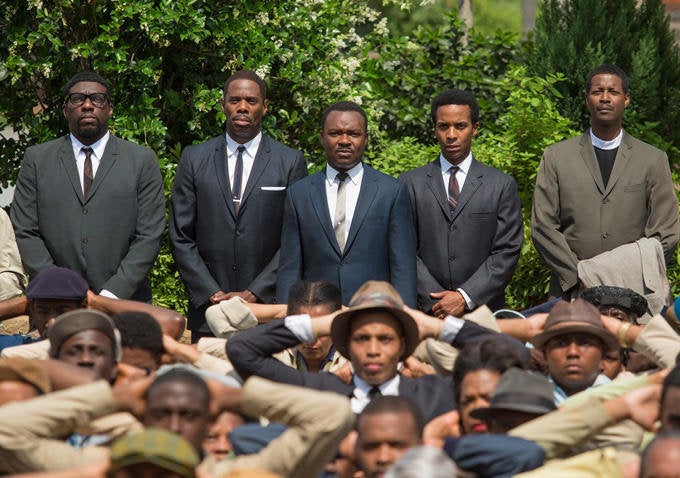
"Birdman" and "Boyhood" have gotten most of the Oscar headlines over the last month, but it's Pawel Pawlikowski's "Ida" that could make history on Sunday. If it wins Best Foreign Language Film, "Ida" -- which was also nominated for Best Cinematography -- would earn Poland its first-ever Oscar in the category.
Set in 1960s Poland, "Ida" focuses on Anna (Agata Trzebuchowska), a young Catholic nun who discovers she's Jewish. Following the revelation, Anna travels to meet her only living relative, Wanda (Agata Kulesza), a wild, promiscuous aunt who joined the Communist Party after the war. There, Anna learns that her birth name is Ida and begins a journey to understand her identity for the first time.
Ahead of Sunday's Oscars, HuffPost Entertainment sat down with Pawlikowski to talk about how he stripped down the "tricks of cinema" to make "Ida" as an effort to purify the film experience.
This is such an original and moving story. What inspired you to write it? I’d read that you based Wanda on a woman you'd met in the 1980s.
Yeah. Not literally, just the idea of that woman. She was like a mystery, how one can be several people in one lifetime. How someone fun and sweet and wise in their 70s can be a fantastic in their early 20s, a member of a murderous establishment in their 30s. That's just a general idea.
And Ida, the notion of her, was inspired by a story I’d heard from a friend about a Polish priest who discovered he was Jewish as well. It’s not about him -- Ida is not this guy -- but it got me thinking. You get these sort of inspirations from real life often, you transform it with stuff you know, then you find the actors and it becomes even richer. The other source of inspiration was the '60s in Poland. I just wanted to bring it to life because it’s the landscape of my childhood. I’m very nostalgic for it. Some people find it very grim, but I find it beautiful.

Was it very personal to film it in those locations?
Yeah. They’re not literally the locations which I knew, but I found ones that could help me bring those memories to life. There’s never just one reason while you make a film. This stuff just kind of gathered over years, it was more like I played with the idea of the Jewish nun for a while. And Wanda, I remember [Helena Brus-Wolinska], who I once wanted to make a documentary about but she never agreed.
Has this idea of multiple identities and self discovery interested you as a filmmaker for some time?
Yeah, of course. "Who are you?" Absolutely. I left Poland at 14. I always felt Polish, but I lived in so many different countries. At some point I was a hippie, at some point I was a jazz musician. There are a lot of identities I’ve shed. I haven’t necessarily changed, but you go through these passions in life, or obsessions or tragedies. But what’s this thing that keeps you going, what’s the narrative in your life? That’s interesting territory.
This is Agata Trzebuchowska's first role ever, and she's the lead. What was it like directing her?
Great, not different from the other Agata, Agata Kulesza who plays Wanda. Agata [Trzebuchowska] knew exactly who she was in the film. She knew that I cast her because she was perfect and not because I couldn’t get somebody else. Everyone in the film was hand-picked. And two Agatas collaborated really well because their relationship more or less reflected the relationship onscreen -- one had played many roles and the other had never been on a film set. Now it sounds easy, of course [then] it was a struggle. I waited until I had the right cast. Every tiny extra, I really hand-picked them for a face, or the way they moved.
Everyone in the film does look very authentic to the time.
I wasn’t so much interested in authenticity, but they do sort of have to look like the ‘60s. People look differently these days, even in Poland. Of course authentic is one thing, but also expressive. It’s more so, “Does it bring a certain something on screen, does it create a bit more electricity on screen?”

Beyond the actors themselves, the cinematography really brings out a gritty, potent sense of life to the film.
Yeah. It should feel real, but it should all the time feel slightly on the edge and expressive, slightly disturbing and strange. It’s a balancing act. But I don’t like this kind of fake realism of cinema. Where people swear a lot or [the camera is] shaky, with cut, cut, cut. That is not interesting. It’s got to be real psychologically.
The film feels reminiscent of early Polish cinema in many ways. Not just the black and white, but the way it’s shot and framed.
I know, but it’s different. When you look at Polish cinema, it’s much more rhetorical always, and much more explicit in dialogue. With “Ida” it’s much more baroque, deep focused. It’s set in Poland in the ‘60s, but I don’t think there was a [Polish] director I was thinking of. Possibly it was some Czech New Wave.
With “Ida,” the way it was made was just avoiding stuff that cinema does on autopilot these days. I call it the tricks of cinema. Like, why does [the camera] have to move, why do you have to have all this coverage? It’s mechanical and milking something obvious. Or why do you have to have music to tell you how to feel? The way that “Ida” came about was eliminating stuff that I didn’t want rather than by imitating something else. There’s also an essence I wanted to find by stripping things down. To have coverage where the audience learns to look at it and live the film differently. So a lot of it is wide shots where people enter the world and have to find their way around it. It’s just letting the audience filling in the spaces.
I think audiences respond to that more now because we’re so bombarded with information now.
Yeah. Not showing a car crash. If you’ve seen it like, 15 times you don’t react to it. How do you purify the whole cinema experience so people can start watching again?
Is that something you aim to do with your films, this purification?
I like that, and I didn’t expect that this film would have such a response. I just thought, “I would love to see such a film.” And I thought I might go to festivals and get distribution here or there. But the fact that so many people in so many countries -- because it’s like 60 countries are showing this film. There’s obviously a hunger for this kind of thing, that slightly contemplative look and for not dragging and forcing the audience to feel stuff.

